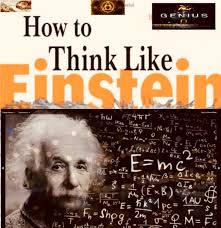White Paper: Enhancing Cognitive Abilities: A Synthesis of Einsteinian Thinking and Mind Mapping
Introduction
Albert Einstein, a towering figure in the annals of science, was renowned not just for his groundbreaking theories but also for his unique approach to thinking. His methods, often referred to as "Einsteinian Thinking," involved a combination of creativity, critical thinking, and a deep understanding of fundamental principles. This white paper explores the core principles of Einsteinian Thinking and delves into techniques like mind mapping and Zettelkasten to enhance cognitive abilities and foster innovation.
Einsteinian Thinking: A Deep Dive
- Curiosity and Imagination: Einstein was driven by an insatiable curiosity and an ability to think beyond conventional boundaries.
- Questioning the Obvious: He challenged assumptions and sought alternative explanations.
- Visual Thinking: Einstein often used visual representations to understand complex concepts.
- Thought Experiments: He conducted mental experiments to explore the implications of physical theories.
- Persistence and Patience: Einstein believed that great ideas often require time and perseverance.
Mind Mapping: A Visual Thinking Tool
Mind mapping is a powerful technique for organizing thoughts, generating ideas, and stimulating creativity. It involves creating a central idea and branching out to related concepts, forming a visual map of information.
Zettelkasten: A Note-Taking System
The Zettelkasten method is a structured note-taking system that encourages deep thinking and knowledge synthesis. It involves creating small, interconnected notes that can be linked and referenced.
Combining Einsteinian Thinking, Mind Mapping, and Zettelkasten
By combining these techniques, individuals can significantly enhance their cognitive abilities and problem-solving skills:
- Generate Ideas: Use mind mapping to brainstorm and explore different perspectives.
- Deepen Understanding: Create Zettelkasten notes to delve into specific topics and connect ideas.
- Visualize Complex Concepts: Use diagrams and visualizations to simplify complex information.
- Question Assumptions: Challenge conventional wisdom and explore alternative solutions.
- Experiment and Iterate: Embrace a trial-and-error approach to problem-solving.
- Cultivate Curiosity: Continuously seek out new knowledge and experiences.
Practical Applications
- Studying and Learning: Use mind maps to visualize complex topics and create study guides.
- Problem-Solving: Break down complex problems into smaller, more manageable parts.
- Creative Thinking: Generate new ideas and innovative solutions.
- Writing and Research: Organize thoughts and develop coherent arguments.
- Project Planning: Visualize project timelines and dependencies.
Conclusion
By adopting the principles of Einsteinian Thinking, mind mapping, and the Zettelkasten method, individuals can unlock their full cognitive potential. These techniques can be applied to various domains, from academic research to business innovation. By cultivating a curious and inquisitive mindset, embracing visual thinking, and utilizing effective note-taking systems, we can all aspire to think more creatively, critically, and effectively.
References:
- Einstein, Albert. Ideas and Opinions. Crown Publishers, 1954.
- Sönke Ahrens. How to Take Smart Notes: One Simple Technique to Boost Your Learning, Memory, and Productivity. Basic Books, 2017.
- Buzan, Tony. Mind Maps: How to Use Them to Improve Your Thinking.* Penguin Books, 2009.
- The Art of Problem Solving: https://www.amazon.com/Books-George-Polya/s?rh=n%3A283155%2Cp_27%3AGeorge+Polya
- Thinking, Fast and Slow: https://www.amazon.com/Thinking-Fast-Slow-Daniel-Kahneman/dp/03745335551
Additional Tips:
- Practice Regularly: Consistent practice is key to developing these skills.
- Embrace Failure: Don't be afraid to make mistakes and learn from them.
- Collaborate with Others: Share ideas and learn from others.
- Use Technology: Utilize digital tools to enhance your thinking and learning processes.
- Take Breaks: Regular breaks can improve focus and creativity.
By incorporating these strategies into your daily life, you can unlock your full potential and achieve greater success. Contact ias-research.com for details.



